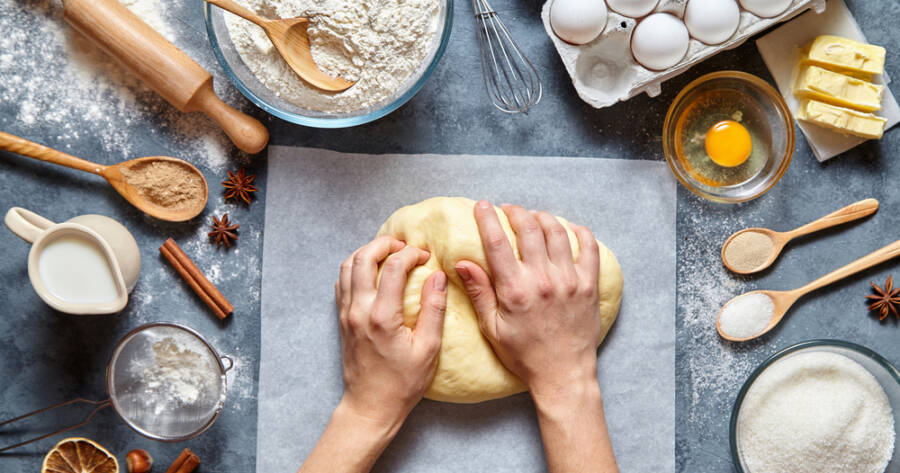Baking is often seen as an indulgence, filled with butter, sugar, and refined flour. And while there’s nothing wrong with enjoying a rich treat every now and then, sometimes you want your favorite baked goods to be a little lighter—without sacrificing flavor or texture. The good news? You can make smart ingredient swaps that boost nutrition, cut back on sugar or fat, and still result in delicious cookies, muffins, cakes, and more.
Whether you’re trying to bake with fewer processed ingredients or accommodate a specific dietary goal, these easy, tested substitutions will help you bake smarter—not sadder.
Swap All-Purpose Flour for Whole Grain Options
Refined white flour offers structure, but it lacks fiber and nutrients. Substituting all or part of it with a whole grain option can give your baked goods a nutritional boost—and a more satisfying, hearty flavor.
Try this:
-
Whole wheat flour: Swap up to 50% of the white flour in cookies, muffins, and quick breads without much change in taste or texture.
-
Oat flour: Great for tender muffins or pancakes, oat flour adds fiber and a subtly sweet flavor.
-
Almond flour: Naturally gluten-free, it adds healthy fats and a rich, nutty taste—best used in combination with another flour for structure.
Tip: If you swap 100% of the white flour, expect a denser texture. Start small and adjust as you go.
Reduce Sugar with Natural Alternatives
Too much sugar can overpower a recipe and lead to blood sugar spikes. Reducing added sugar doesn’t mean compromising on sweetness—you just need to be a little creative.
Try this:
-
Mashed bananas or unsweetened applesauce: Use in muffins, breads, or pancakes to reduce added sugar and add moisture. Start by replacing 1/4 to 1/2 of the sugar.
-
Maple syrup or honey: Natural sweeteners that also add depth. Use slightly less than the sugar amount and reduce liquid elsewhere in the recipe.
-
Coconut sugar or date sugar: Lower glycemic options with a warm, caramel-like flavor.
Tip: Always taste your batter (when safe) and adjust sweetness to your liking. Some recipes can handle a 25–30% sugar reduction without noticeable change.
Use Yogurt or Applesauce in Place of Butter or Oil
Fats add richness and texture to baked goods, but you can often reduce them or use alternatives that provide similar moisture and structure with fewer calories.
Try this:
-
Greek yogurt: Adds protein and moisture—ideal for muffins, cakes, and quick breads. Substitute half the butter or oil with yogurt.
-
Unsweetened applesauce: Works well in soft, moist recipes like brownies or banana bread. Replace up to half of the fat.
-
Avocado: Mashed avocado provides healthy fats and a creamy texture, especially in chocolate-based recipes.
Tip: These swaps work best in recipes that are already moist and don’t rely heavily on fat for crispness, like scones or pie crusts.
Opt for Dark Chocolate or Cocoa Powder
If a recipe calls for milk chocolate or semi-sweet chips, consider using dark chocolate instead. It’s lower in sugar and richer in antioxidants—plus, it delivers a deeper, more satisfying chocolate flavor.
Try this:
-
Use 70% dark chocolate or higher for chips or chunks.
-
Swap sweetened cocoa powder for unsweetened cocoa powder and control the sweetness yourself.
Tip: A small sprinkle of sea salt or espresso powder can enhance the chocolate flavor and make it feel even more indulgent.
Add Fiber and Protein with Nuts, Seeds, and Legumes
Looking to make your baked goods more filling? Add-ins like chia seeds, flaxseed meal, nut butters, or even pureed beans can add texture, nutrients, and staying power.
Try this:
-
Ground flaxseed or chia seeds: Add 1–2 tablespoons to muffins or cookies for omega-3s and fiber.
-
Peanut butter or almond butter: Replace some of the butter or oil for rich flavor and added protein.
-
Black beans or chickpeas: Surprisingly great in brownies or blondies—blend them into the batter for a fiber-rich base.
Tip: Start small and experiment—these ingredients can change texture, so try tested recipes first if you’re unsure.
Better Baking Starts with Balance
Healthy baking doesn’t have to mean dry muffins or bland cookies. With a few creative swaps, you can enjoy treats that are just as flavorful—if not more so—than the originals. Whether you’re cutting back on sugar, adding more whole grains, or boosting the nutrient profile of your favorite recipe, these substitutions make it easier to feel good about what you’re baking and eating.
So go ahead, preheat that oven. Healthier baking just got a whole lot more delicious.

